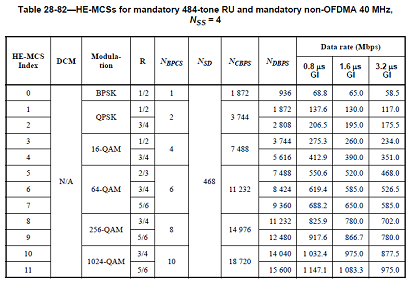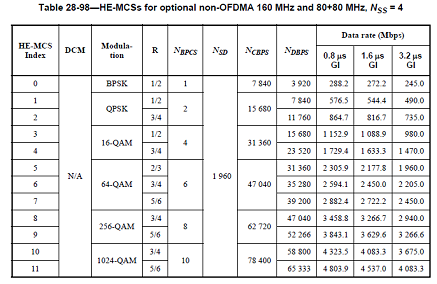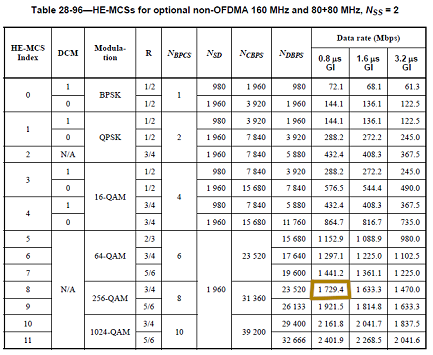Well, draft 11ax routers are almost here. Products have been announced and chip and end-product manufacturers are feverishly testing and bugfixing to get routers on retailer shelves for the upcoming holiday buying season. And if consumers respond as they have in the past, there will be plenty of takers ready to spend significantly more than $300 to bring one home.
Here’s what you should know before you buy.
You’re buying a draft standard product
Manufacturers are making little to no effort to make clear that these products are based on an IEEE draft standard and it’s unlikely any government agency will make them (at least not in the U.S.). The word "draft" appears nowhere on the ASUS RT-AX88U product or spec pages. And if it appears on any other manufacturer’s products, it will likely be in faint, tiny print somewhere on a product box end flap or buried in an equally tiny footnote on the product page or spec sheet.
Shipping draft-standard products has happened for the last three Wi-Fi standards (N, AC and now AX). While draft standard products were not obsoleted when the standards were finally released, they did not support all the features of the released standard. This will likely be the case with 11ax.
We already know that one key AX feature, uplink MU-MIMO, is not supported in the first round of draft 11ax products, even though chipset manufacturers all say their devices can support it.
For the 11ac rollout, this was all marketed as "Wave 1" and "Wave 2" to make it seem part of a master plan. Although I haven’t heard the "W" word yet applied to AX, this approach seems likely to be used again.
How’s the spec doing?
It took three drafts, but 11ax draft 3.0 passed WG Letter Ballot #233 with 86.5 % approval in July. However, "about 2250" comments were received and work continues to resolve these to push toward the November Draft 4.0 deadline.
So anything you buy now is designed to, at best, Draft 3.0, which is not the final draft spec.
Side note: 802.11ac Draft 2.0 passed the 75% approval rate at 89%. But Draft 7.0 was the released draft.
There are no 11ax devices
As has also become standard practice, draft 11ax consumer routers are coming to market before draft 11ax devices. I’m told some draft 11ax devices will likely be announced at January’s CES 2019, which would be a much shorter gap then we had with 11ac.
But widespread availability will likely depend on a released standard, at least before U.S. mobile providers jump on the bandwagon. If the past is repeated, draft 11ax devices are likely to appear in Asia first. You won’t see them in volume in the U.S. until maybe late 2019.
Will my devices work with 11ax?
This is an important question. Although there are sure to be exceptions, most of the millions and millions of Wi-Fi devices out in the wild had better at least connect and get some reasonable level of bandwidth from your new draft 11ax router or they’ll be making a quick trip back to the store.
You can be sure that manufacturers are testing the hell out of the most popular Android and iOS devices to make sure they’ll operate reliably and well. But whether the cheapo Wi-Fi connected switch you bought on eBay will work just as well is anyone’s guess.
If past experience holds true, there are sure to be compatibility hiccups across manufacturers. Or at least let’s say that manufacturer-specific optimizations may cause problems with other manufacturer’s devices. Since Broadcom-based routers are likely to be first to market and their tweaks have caused problems in the past, we can probably expect to see this again.
In other words, if your device acts flaky with your new router, don’t be surprised.
Will I see improved performance?
This is the real money question, because why else would you buy a new router?
Assuming you have a dual-stream 11ac device, common in many current smartphones, the fastest link rate you’re going to see will be 867 Mbps in 5 GHz and 400 Mbps in 2.4 GHz. This assumes your device supports 256 QAM modulation in both 2.4 and 5 GHz. Although 256 QAM is not standard in 2.4 GHz, newer AC devices seem to support it. But this requires operating in 40 MHz bandwidth mode, which might not be possible in crowded areas.
So what does draft 11ax have that can speed things up and that might work with current AC devices? Only 160 MHz bandwidth and 1024 QAM modulation. Let’s see if either applies, using what we know about ASUS’ RT-AX88U.
The RT-AX88U supports four streams in both bands. ASUS specs maximum link rates of 1148 Mbps in 2.4 GHz and 4804 Mbps in 5 GHz.
Achieving the maximum 1148 Mbps 2.4 GHz rate requires a device support 1024 QAM modulation, 40 MHz bandwidth and four streams, as shown in the table below (use the 0.8uS GI column).

802.11ax MCS table – four streams, 40 MHz bandwidth
Since our device has only two streams, the maximum rate is cut in half to 574 Mbps. But no devices I can find support 1024 QAM in 2.4 GHz. So the maximum rate we’ll see if the device can operate in 40 MHz bandwidth and if it supports 256 QAM, is the same 400 Mbps you’d get with any 11ac router that also supports 256 QAM.
2.4 GHz verdict: No link rate gain.
For 5 GHz, getting to 4804 Mbps again requires 1024 QAM support, either 80+80 or 160 MHz bandwidth support and four streams.

802.11ax MCS table – four streams, 160 / 80+80 MHz bandwidth
Since we have only a two-stream device, the maximum possible rate is halved to 2402 Mbps. The only 11ac two-stream device supporting 160 MHz bandwidth I know of is Intel’s Wireless-AC 9260. The spec is surprisingly incomplete for a company of Intel’s stature, but does state a "1.73 Gbps Max speed", not the 2.402 Gbps we just calculated.
Consulting a proper MCS table reveals that a 1729.4 Mbps rate requires only 256 QAM modulation, which is what the AC9260 apparently supports.

802.11ax MCS table – two streams, 160 / 80+80 MHz bandwidth
So if we were to connect it to an 11ac router that suports contiguous 160 MHz bandwidth (the AC9260 does not spec 80+80 support), we should be able to potentially double the usual 867 Mbps maximum link rate to 1733 Mbps. But this could already be achieved with an AC router that supports contiguous 160 MHz, such as NETGEAR’s R7800 Nighthawk X4S…no 11ax required!
5 GHz verdict: No link rate gain unless you have an Intel AC9260 and don’t have a 160 MHz contiguous 11ac router.
Closing Thoughts
You’re going to be hearing a lot about the wonders of 802.11ax as consumer router makers prepare the ground for what they hope will be a bountiful crop of too-eager consumers. Here’s one that NETGEAR just launched today.
While the pretty graphics may be nice to look at, keep in mind that most of the buzzwords you see like Up and downlink OFDMA, Spatial Reuse with Color Codes, Resource Scheduling, 8×8 MU-MIMO and even 1024 QAM won’t come into play until you buy draft 11ax devices.
Of course this won’t stop marketeers from making statements like NETGEAR’s "An AX WiFi router can provide significant efficiency improvement to your existing network and also helps existing WiFi devices have faster speed".
Sure, this is technically not incorrect because 11ax devices should be able to use less airtime than 11ac devices to move the same data. But it once again, omits the key point that these wonders come after you add draft 11ax devices to your network.
While there may be small gains due to better RF design and faster processors–which I’ll be testing for once I get real product in my hands–you’ll need to wait for the devices to see real improvement.
